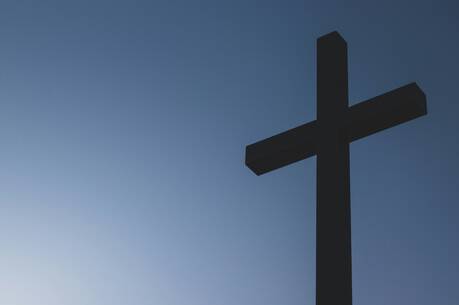Easter Affirmations
The two most important days on the church’s calendar are Good Friday and Easter Sunday. This is so because Jesus’ death and resurrection are at the core of Christian faith. The early Christian confessions of faith embedded in the New Testament place these events front and center. In fact, they are so closely related as to constitute one great event.
One peculiar feature of the four Gospels is that they contain no direct description of the resurrection of Jesus. Instead of any explicit portrayal of his resurrection we have narratives about the discovery of the empty tomb and about the appearances of the risen Jesus to various individuals and groups among his followers.
The Scripture readings for Easter Day make three great affirmations. They proclaim that the tomb where Jesus’ body had been placed was found to be empty, that Jesus appeared alive to certain of his followers and that through faith and baptism we can share in the new life of the risen Christ. Taken together, these affirmations constitute the church’s Easter faith and proclamation.
First, the tomb was empty. On Good Friday Jesus had died on the cross. His corpse was taken down from the cross and laid out in a new and otherwise empty burial cave belonging to Joseph of Arimathea, not far from the place of his execution. Mary Magdalene and other women followers saw Jesus die, saw him taken down from the cross and saw where he was buried. They knew that he was dead and did not go to the wrong tomb.
The empty tomb stories in all four Gospels attest that on Easter Sunday morning Jesus’ tomb was found to be empty. In Mark’s account the women are terrified at their discovery, even when told by the young man in a white robe that “he has been raised; he is not here.” In John’s account we have very different reactions from three characters who were close to Jesus. Mary Magdalene sees the empty tomb and suspects that Jesus’ body had been stolen. Peter sees the empty tomb and the neat disposition of Jesus’ burial garments but draws no conclusion. The Beloved Disciple, however, “saw and believed.” What did he believe? He apparently believed that Jesus, who had really died on Good Friday, had been miraculously raised to life by God.
In this context resurrection is more than a metaphor or resuscitation or immortality of the soul. It means that the whole person—body and soul—has been raised to full and eternal life. The resurrection of Jesus is a decisive step toward and the pledge of the full coming of God’s kingdom.
Second, Jesus appeared as alive again to certain of his disciples. Peter’s speech in Acts 10 is a good sample of early apostolic preaching according to Luke. At the center of this speech is the proclamation that God raised Jesus from the dead on the third day and granted that he be visible to witnesses chosen by God. By their eating and drinking with the risen Jesus, they could testify that he was fully alive again.
The Gospels present many accounts of the risen Jesus’ appearances. During Easter week the individual narratives are read on successive days. The point is that these witnesses who knew Jesus before his death testified that on Easter Sunday and afterward they experienced Jesus as alive again. So powerful were these experiences of the risen Jesus that the witnesses were transformed. Those who had deserted and denied Jesus shortly before became bold in their faith and eager to tell the story of Jesus to anyone who might listen. Their transformation is the best proof of Jesus’ resurrection.
Third, we can share in the life of the risen Jesus. The reading from the letter to the Colossians affirms that we have been raised with Christ and therefore we should seek the things that are above. Through our faith and baptism we can and do participate in Jesus’ death and resurrection. Of course, we still await the fullness of life with God in his eternal kingdom. Nevertheless, for us eternal life has already begun. The resurrection of Jesus is the origin and dynamism of our own eternal life.
On Easter Sunday we celebrate Jesus’ triumph over death, find a reason for our joy and hope and discern a purpose and direction in our lives. The word alleluia is the slogan of the Easter season. It is the Greek transliteration of the Hebrew phrase hallelujah, consisting of the second person plural imperative (hallelu) and the shortened form of the distinctive Hebrew name for God (Yah = Yahweh). It means “praise the Lord.” As such it is a fitting response to what we affirm and celebrate on Easter Sunday.
This article also appeared in print, under the headline “Easter Affirmations,” in the April 10, 2006, issue.







